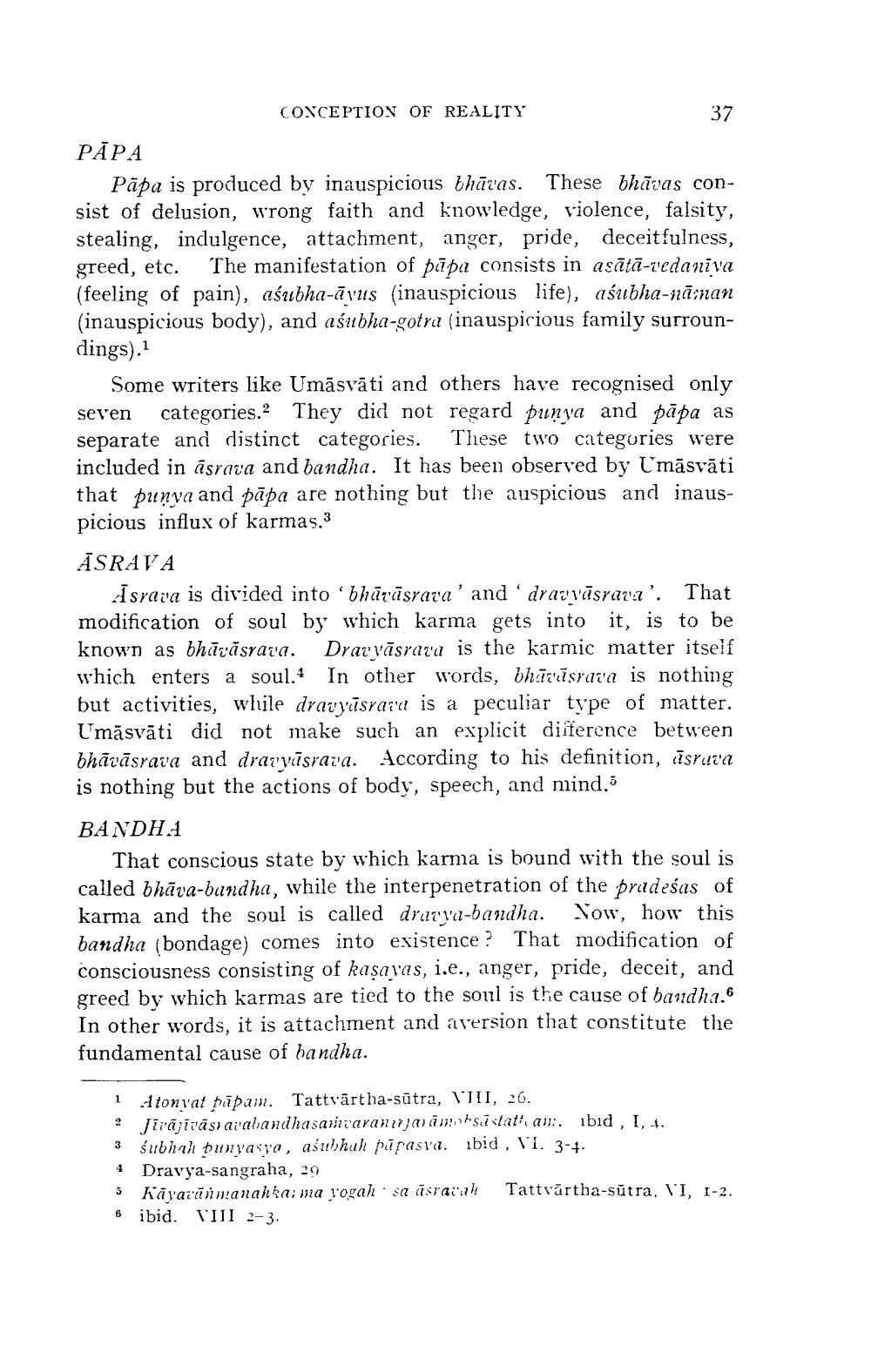________________
CONCEPTION OF REALITY
37
PAPA
Pāpa is produced by inauspicious bhāras. These bhāvas consist of delusion, wrong faith and knowledge, violence, falsity, stealing, indulgence, attachment, anger, pride, deceitfulness, greed, etc. The manifestation of papa consists in asātā-redanīva (feeling of pain), aśubha-āvus (inauspicious life), aśubha-nārnan (inauspicious body), and aśubha-gotra (inauspicious family surroundings).1
Some writers like Umāsvāti and others have recognised only seven categories. They did not regard punya and pāpa as separate and distinct categories. These two categories were included in asrava and bandha. It has been observed by C'māsvāti that punya and pāpa are nothing but the auspicious and inauspicious influx of karmas.3 ĀSRAVA
Asrava is divided into 'bhīrāsyara' and 'drazvīsrarı'. That modification of soul by which karma gets into it, is to be known as bhīvāsrava. Drarvāsrava is the karmic matter itself which enters a soul. In other words, bhlīzīsrava is nothing but activities, while drary'israru is a peculiar type of matter. Umāsväti did not make such an explicit diference between bhāvāsrava and draivisrava. According to his definition, isruta is nothing but the actions of body, speech, and mind.5 BANDHA
That conscious state by which karma is bound with the soul is called bhāva-bandha, while the interpenetration of the pradeśas of karma and the soul is called dracia-bandha. Now, how this bandha (bondage) comes into existence? That modification of consciousness consisting of kaşayas, i.e., anger, pride, deceit, and greed by which karmas are tied to the soul is the cause of bandh1.6 In other words, it is attachment and aversion that constitute the fundamental cause of handha.
1 Atonvat pīpam. Tattvārtha-sūtra, VIII, 20. ? Jirāīvāsvavabandhasariwaranırja nasistathali. ibid, I, 4. 3 śubhah m asya, aśubhuh pusasia. ibid, VI. 3-4. 4 Dravya-sangraha, 29 5 käyacinmanahka: ma l'ogah. sa usrarak Tattvärtha-sútra, VI 1-2. 6 ibid. VIII 2-3.




